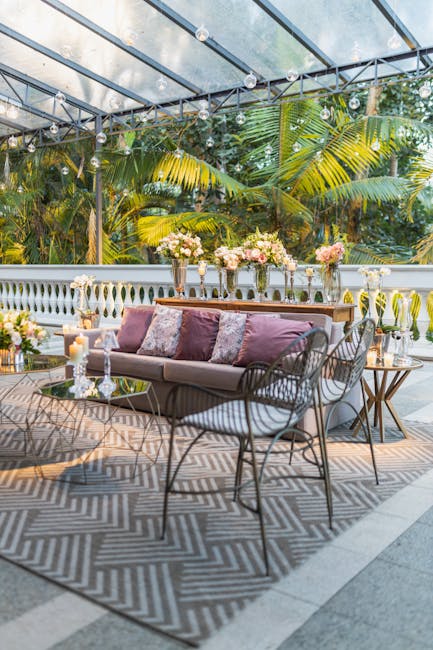The Science Behind Comfortable Outdoor Seating Arrangements and Layouts
Introduction
Creating comfortable outdoor seating arrangements is more than just placing furniture in a yard. It’s a science that blends principles of human psychology, ergonomics, environmental factors, and design aesthetics. Understanding the science behind comfortable outdoor spaces can transform your patio, deck, or garden into a haven for relaxation and socializing. This article explores the key scientific elements that contribute to optimal outdoor seating arrangements and layouts.
The Science of Comfort: Key Considerations
The Psychology of Space
Our perception of space significantly impacts our comfort levels. Consider these psychological factors:
- Proximity and Intimacy: Humans prefer a comfortable distance from each other during conversations. Group seating arrangements should facilitate natural interaction without feeling crowded.
- Views and Orientation: Position seating to maximize pleasant views, whether it’s a garden, a scenic landscape, or even just a thoughtfully designed focal point. Avoid placing seating where people are constantly facing harsh sunlight or unattractive views.
- Sense of Enclosure: A feeling of enclosure, without feeling trapped, can enhance comfort. This can be achieved through partial walls, strategically placed plants, or overhead structures like pergolas.
- Color Psychology: Colors influence mood. Use colors that promote relaxation and tranquility. Blues and greens are often associated with calmness, while warmer tones can create a more energetic atmosphere.
Ergonomics and Body Support
Comfortable seating must support the body correctly. Ergonomic principles are paramount:
- Seat Height and Depth: Chairs should have a seat height that allows feet to rest comfortably on the ground. Seat depth should provide adequate support without being too deep, which can lead to slouching.
- Back Support: Lumbar support is crucial for preventing back pain. Look for chairs with curved backrests or consider adding cushions for extra support.
- Armrests: Armrests should be at a comfortable height to support the arms and shoulders, reducing strain.
- Material Considerations: The texture and breathability of materials affect comfort, especially in warmer climates. Opt for breathable fabrics or materials that won’t become excessively hot or sticky.
Environmental Factors and Microclimates
Outdoor spaces are subject to the elements. Controlling these factors is crucial for maintaining comfort:
- Sun Exposure: Excessive sun exposure leads to overheating and discomfort. Provide shade using umbrellas, awnings, trees, or pergolas. Consider the sun’s path throughout the day to optimize shade coverage.
- Wind Protection: Strong winds can be disruptive and uncomfortable. Use windbreaks such as fences, hedges, or screens to reduce wind exposure.
- Temperature Regulation: Incorporate elements that help regulate temperature. Water features can provide a cooling effect through evaporation. Consider outdoor heaters for cooler evenings.
- Noise Reduction: Excessive noise can be stressful. Plant trees and shrubs to absorb sound, or consider adding a water feature to mask unwanted noises.
Spatial Arrangement and Flow
How furniture is arranged impacts movement and social interaction:
- Traffic Flow: Ensure clear pathways to and from seating areas. Avoid creating obstacles that impede movement.
- Focal Points: Direct the eye to attractive features in the landscape. Arrange seating to highlight these focal points.
- Zoning: Divide the outdoor space into distinct zones for different activities, such as dining, lounging, or socializing. This helps to create a more organized and functional space.
- Scale and Proportion: Furniture should be appropriately sized for the space. Oversized furniture can overwhelm a small patio, while undersized furniture can look lost in a large garden.
Conclusion
Creating comfortable outdoor seating arrangements involves a blend of art and science. By understanding the psychological, ergonomic, and environmental factors that influence comfort, you can design an outdoor space that is both functional and inviting. Applying these principles will transform your patio or garden into a true extension of your living space, a place where you and your guests can relax, socialize, and enjoy the outdoors in comfort and style. Remember to consider your specific needs and preferences, and to adapt these principles to your unique outdoor environment for optimal results.














Post Comment